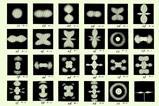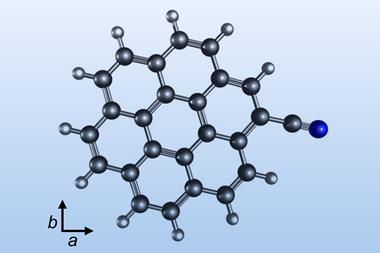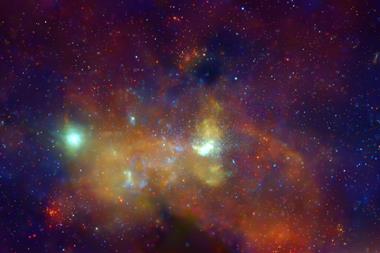Researchers propose a new biosignature that could hint at habitable exoplanets

Thirty years ago, when I was an editor at Nature, the journal received a manuscript that left us in a quandary. It was submitted by Carl Sagan, whose international fame as the presenter of the TV show Cosmos (I, like other nerdy kids of my generation, had watched it avidly) already made it hard to consider the paper dispassionately. Sagan was of course a respected planetary scientist, albeit having suffered from the elitist derision that then tended to be directed by many scientists at peers who deigned to popularise their work. But our problem was that the paper wasn’t really reporting anything new or surprising. Its conclusion was that there was probably intelligent life on Earth.
What made this suggestion striking, however, was that it was derived solely from data collected by Nasa’s Galileo spacecraft as it passed 960km above our planet on its way to Jupiter after a gravitational assist via Venus. Sagan had the prescient idea of testing whether the spacecraft’s detectors, including infrared and ultraviolet spectrometers, could gather enough remote-sensing data to make a strong case for our planet being inhabited. Those data also included direct imaging of the surface and plasma-wave detection of radio signals, but much of the argument hinged on the spectroscopic analysis of the atmosphere’s chemical composition.
What is perhaps most distinctive about the Earth’s atmosphere is its high oxygen content, produced by photosynthesis. Non-living processes can also generate oxygen in planetary atmospheres, in particular photolytic splitting of water vapour by ultraviolet light from the parent star, whereupon the liberated hydrogen atoms escape the grasp of gravity. But it would be hard to account for that much oxygen this way. What’s more, our atmosphere has vastly more methane – also generated biogenically – than will stably coexist with so much oxygen. In other words, the atmosphere is strongly out of equilibrium, thanks in large part to our biosphere.
That’s what made the study by Sagan and his colleagues – which thankfully we decided to publish – so foresightful1,2. The same principles are now being followed to seek ‘biosignatures’ in the atmospheres of planets beyond our solar system (exoplanets), as observed from immense distances in the spectra detected by telescopes such as the James Webb Space Telescope (JWST). The spectra are measured as the exoplanets cross the face of their star and some tiny fraction of the starlight is absorbed, in a wavelength-selective way, by its passage through the atmosphere.
Oxygen remains a potential biosignature, although it can hardly supply conclusive proof alone. ‘For decades oxygen was our favourite gas,’ planetary scientist Sara Seager at the Massachusetts Institute of Technology in the US told me recently. Better still would be that wildly non-equilibrium combination of oxygen and methane – although Sarah Hörst of Johns Hopkins University, US, says she has made such mixtures abiotically in the lab.
Some seek more exotic molecules known to be made by living organisms on Earth, and for which it is very hard to dream up any other way of making them in sufficient quantities. Seager and her colleagues have reported phosphine in the clouds of Venus as a possible biosignature,3 while a group at the University of Cambridge, UK, recently claimed the possible detection by the JWST of dimethyl sulfide, emitted on Earth by marine plankton, in the atmosphere of a planet called K2-18b, orbiting a dwarf star in the constellation Leo.4
Oscillating ozone
A team at the California Institute of Technology, US, and Peking University, China, has recently proposed a new and rather intriguing potential biosignature: a slow oscillation in the concentration of ozone, caused by a reaction with nitrous oxides (NOx) emitted from the surface.5 Ozone itself, produced photochemically from molecular oxygen, might be considered a biosignature; but these oscillations don’t signal any change in the source itself. Rather, they come from an inherent nonlinear instability in the photochemical reactions of NOx and O3 when coupled to radiative transfer in the atmosphere.
The researchers say that a (constant) source of NOx strong enough to sustain the oscillations would probably have to be biological. They have modelled this process for the exoplanet Trappist-1e, a prominent exobiology candidate because it lies in the habitable zone of the dwarf star Trappist-1 in the constellation Aquarius. The oscillations have a period of about one Earth century: too slow to see an entire cycle, but enough to see a marked change over time. And because an ozone layer sits well above any cloud deck, it should be easier to detect spectroscopically.
All this makes for a rich landscape of possibilities for astronomers and astrobiologists to explore. But it’s not clear we’ll ever find definitive evidence of life this way. Hörst, for one, thinks we’d need to know a lot more about a planet – say, its tectonics, impact history, near neighbours – before interpreting its atmospheric chemistry with confidence.
References
1. C Sagan et al, Nature, 1993, 365, 715 (DOI: 10.1038/365715a0)
2. A Witze, Nature, 2023, 622, 451 (DOI: 10.1038/d41586-023-03230-z)
3. J S Greaves et al, Nat. Astron., 2021, 5, 655 (DOI: 10.1038/s41550-020-1174-4)
4. N Madhusudhan et al, arXiv, 2023, DOI: 10.48550/arXiv.2301.08656
5 Y Luo et al, PNAS, 2023, 120, e2309312120 (DOI: 10.1073/pnas.2309312120)

















No comments yet